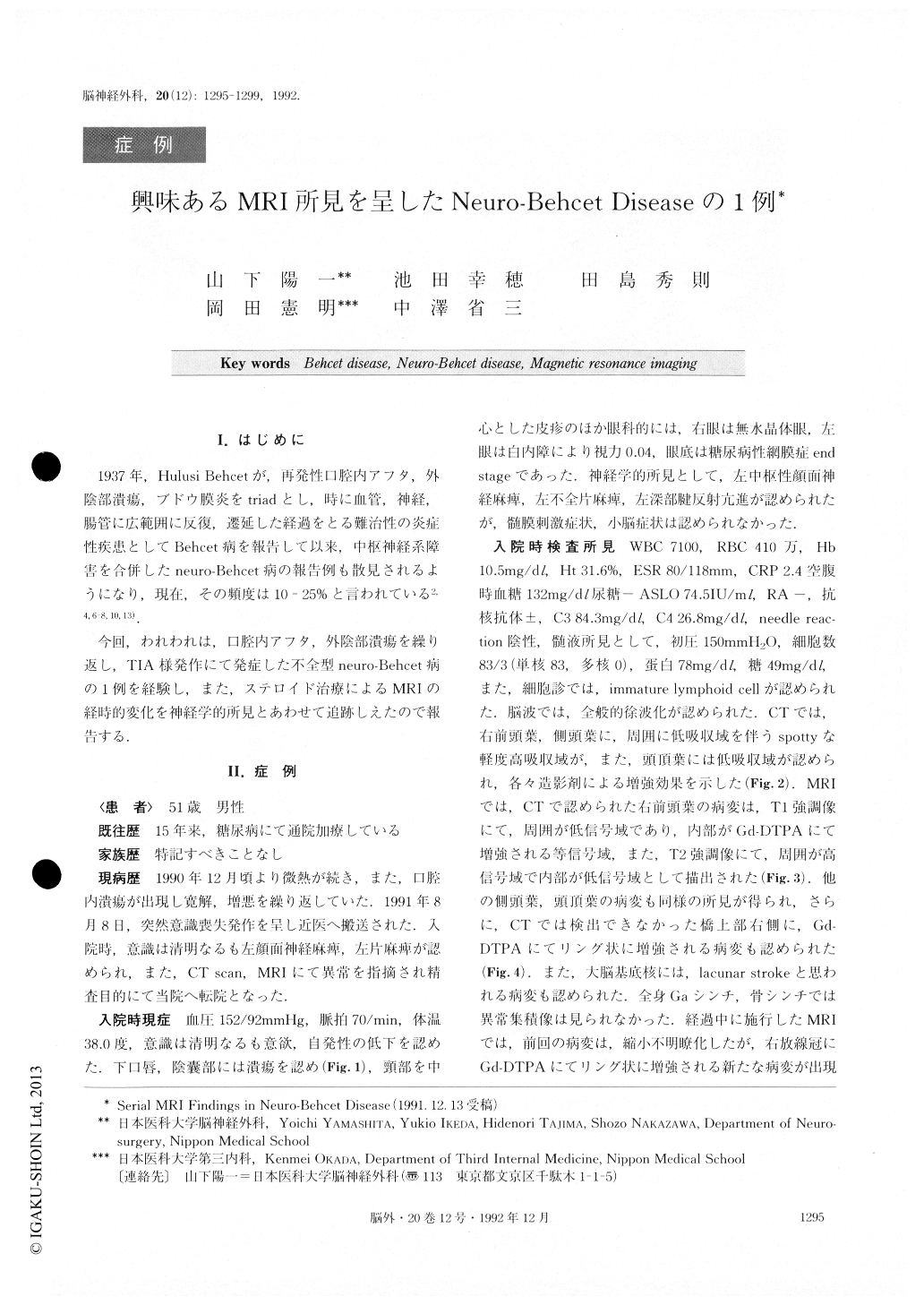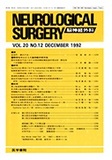Japanese
English
- 有料閲覧
- Abstract 文献概要
- 1ページ目 Look Inside
I.はじめに
1937年,Huiusi Behcetが,再発性口腔内アフタ,外陰部潰瘍,ブドウ膜炎をtriadとし,時に血管,神経,腸管に広範囲に反復,遷延した経過をとる難治性の炎症性疾患としてBehcet病を報告して以来,中枢神経系障害を合併したneuro-Behcet病の報告例も散見されるようになり,現在,その頻度は10-25%と、言われている2,4,6,8,10,13).
今回,われわれは,口腔内アフタ,外陰部潰瘍を繰り返し,TIA様発作にて発症した不全型neuro-Behcet病の1例を経験し,また,ステロイド治療によるMRIの経時的変化を神経学的所見とあわせて追跡しえたので報告する。
Behcet disease is a systemic disorder characterised by the triad of recurrent aphthous ulcers of the mouth, genital ulcers and uveitis. Neurological involvement is estimated at 10 - 25% in Behcet disease (neuro-Behcet). These include diplopia, pseudobulbar palsy, cranial nerve palsies, cerebeller ataxia, and cerebral and spinal sensory and motor disturbances. A case of neuro-Behcet disease is reported. A 51-year-old man was admitted with TIA attack. He had been suffering from recurrent oral and genital ulcers for several months before admission. Neurological examination on admission revealed poor mental activity, left facial nerve palsy and left hemi-paresis. Lumbar puncture showed CSF pleocytosis. CT and MRI revealed multiple lesions in the cerebral hemi-sphere and the brain stem. CT showed spotty high densi-ty areas with perifocal low density areas in the frontal, temporal and parietal lobe which were enhanced with contrast materials. T1 weighted image of MRI revealed iso intensity areas with perifocal low intensity areas which were enhanced with Gd-DTPA in the frontal, tem-poral and parietal lobes. T2 weighted image revealed low intensity areas with perifocal high intensity areas in the same regions shown in the T1 weighted image. Moreo-ver ring-like enhanced lesions with Gd-DTPA were re-vealed in the brain stem and corona radiata in the T1 weighted image. After high close steroid treatment, he showed marked clinical improvement. CSF pleocytosis was normalized and the lesions were gradually reduced in size and were no longer enhanced with Gd-DTPA. MRI findings are well correlated with clinical features. MRI is useful for detecting lesions of neuro-Behcet dis-ease, especially in the brain stem region and for evaluat-ing the efficacy of treatment.

Copyright © 1992, Igaku-Shoin Ltd. All rights reserved.


